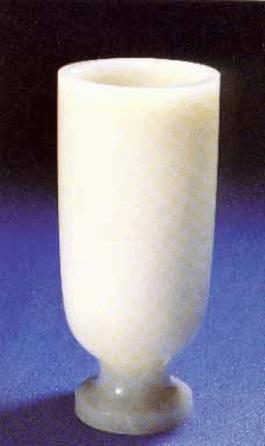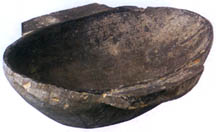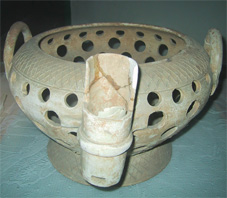 |
| Jade cup of the Wei Kingdom in the Three Kingdoms
Period |
The Three Kingdoms Period, where rival states of
the Wei, Shu and Wu existed side by side, lasted approximately from 189 to 265.
 |
| Porcelain eared cup |
Around 220 at the
end of the Eastern Han Dynasty, the Yellow Turban Uprising shook the regime to
its foundations. Warlords around the country seized this opportunity to expand
their own forces and influence, breaking away from central control. After a
tangled warfare among various local feudal lords, the regimes were divided and
ruled by the Wei, Shu and Wu.
The three kingdoms strived to develop under
each regime. After overthrowing the Han and setting up the Wei Kingdom, Cao Pi
adopted a system of nine ranks of officials selected by appointed governmental
officials, which became the tool of the gentry's monopoly and was replaced by
the imperial examination system in the Sui Dynasty (581-618).
 |
| Celadon incense burner |
In the Shu
Kingdom, Emperor Liu Bei and Prime Minister Zhu Geliang actively promoted the
development of the local economy, such as the mass production of the Shu
brocade. Zhu ordered several northern expeditions, all of which failed. He died
on his sickbed in the cantonment during the last expedition. The Wu Kingdom also
paid attention to economic development with its high-level shipbuilding
technology.
After the Western Jin Dynasty (265-316)
overthrew the Wei Kingdom, the country gradually became unified. Later, the
Western Jin defeated the Wu and unified the China that had remained divided
since the end of the Eastern Han Dynasty.



